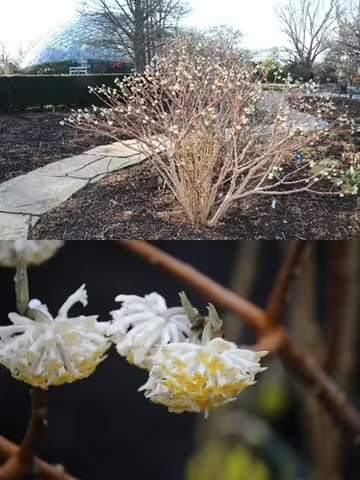The itch to garden
I’m not there yet, but I know I’ll start getting the planting bug once the garden catalogs start arriving in the mail. I have developed several criteria a plant must have before I even consider acquiring it for my garden though.
- Cold hardiness
- Heat tolerance
- Somewhat drought tolerant
- Non-aggressive
Plants can only take so much cold
Most plants sold in the United States are rated for cold hardiness using minimum temperature ranges established for the USDA Plant Hardiness Zone Map. The map is based on the annual extreme minimum temperatures over a 30-year period (1976-2005). The St Louis Metro East is depicted as a transition zone between Zone 6a (-10°F to -5°F) and zone 6b (-5°F to 0°F), meaning anything rated for Zone 7a (0°F - 5°F) or warmer is not suited to the area. Ranges for plants are listed from coldest to warmest.
I try to stick to plants with a cold hardiness starting range below my hardiness zone of 6a. That way, if winter temps drop lower than normal, the plant has sufficient cold hardiness to survive. Take for example early 2014. On January 7, temperatures dropped to -14°F which is below what is normally experienced, killing or injuring any exposed dormant plants not rated for at least Zone 5b (-15°F to -10°F). The saving grace with that cold snap was a significant snowfall which provided insulation to any plants sufficiently covered.
Like many other gardeners, I have tried on occasion to push the limits of cold hardiness, but almost always to the detriment of the plant. One example is paperbush (Edgeworthia chrysantha ‘Snow Cream’). I have determined from multiple attempts in the past that I can’t grow paperbush, while just across the Mississippi River, Missouri Botanical Garden can because of the St Louis heat island effect. It’s tough to accept limitations when you are so close, but a dead plant tells no lies.
Cold tolerance does not equal heat tolerance
Heat intolerance is probably one of my greatest frustrations with gardening in the St Louis Metro East. It just gets too hot to grow certain plants, and even if they do go dormant early from the heat, extended dry periods tend to finish them off. So how do you know which plants or plant families are sensitive to heat and/or periods of drought? Unfortunately, I have learned through trial and lots of errors. Having kept detailed notes in my “killed list,” I can say with certainty that I am an utter failure at plants like blue poppies (Meconopsis spp.) or primroses (Primula spp.). I now know anytime I read a description that states “prefers cool soil,” that plant is not for me…there is no cool soil anywhere on my property, even in shade because the moisture is just not there to help compensate.
Sometimes you get lucky, and the label states the American Horticulture Society Plant Heat-Zone tolerance. This map is based on heat rather than cold, specifically, how many days on average per year the temperature exceeds 86°F. Of the 12 zones, the St louis Metro East is in Zone 7 (>60 to 90 days). Ranges for plants are listed from warmest to coldest, opposite of the USDA Plant Hardiness Zone Map.
Don’t kid yourself if you have dry soil
I avoid plant description that read “requires well drained, but consistent moisture.” I have relatively dry soil and since I don’t have an automatic watering system now or in my future, supplying consistent moisture, consistently for an extended time is well beyond me. It’s embarrassing to admit how many globeflowers (Trollius spp.) I have killed over the years just because they happen to be one of those plants I thought I could keep consistently moist. Let’s just say it is well beyond my “kill three, and you stop trying” rule. I now favor labels that state the plant is fairly drought tolerant once established. I feel confident I can commit to getting the plant established and only watering when necessary during periods of drought.
Avoid plant thugs
Ever tell yourself you’ll remember to deadhead that plant before it goes to seed, then paid the price when it reseeded everywhere because you forgot or didn’t get to it in time? I have introduced enough plant thugs to my garden over the years to have totally learned my lesson on this one. If the description states anything about naturalizing, spreading under ideal conditions, spreading by rhizomes or stolons, or reseeding, I start backing away before I know more.
MEET THE AUTHOR
Elizabeth Wahle is a Commercial Agriculture Educator with University of Illinois Extension, and her major focus and expertise is the Illinois commercial specialty crop industry. Elizabeth provides program leadership for a number of program events for commercial growers including From Food to Flowers, the Southern Illinois Fruit and Vegetable School and the Gateway Green Industry Conference. In addition to her statewide duties, Elizabeth also provides consumer horticultural support to University of Illinois Extension in Madison, Monroe, and St Clair counties. Marrying the two responsibilities, Elizabeth is dedicated to creating educational resources that build and sustain viable food webs and ecosystems.

